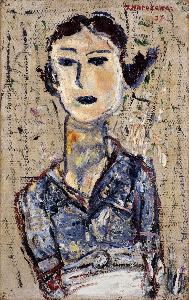Hasekawa Toshiyuki
Hasekawa Toshiyuki;Toshiyuki Hasekawa
Place: Tokyo
Born: 1909
Death: 1984
Biography:
was a Japanese painter born in Tokyo in 1909 and died in 1984. He is known for his oil paintings, including the work Girl of Noa Noa dated 1937. Although not much information is available about his life and career, Hasekawa Toshiyuki was an important figure in the Japanese art scene of the 20th century.
Early Life and Career
Hasekawa Toshiyukiwas born into a family of artists and was encouraged to pursue his passion for painting from a young age. He studied Western-style painting, also known as Yōga, which had a significant influence on his work. Hasekawa Toshiyuki's paintings are characterized by their use of bold colors and expressive brushstrokes, reflecting the **influence of Western art** on his style.
Notable Works
One of Hasekawa Toshiyuki's most notable works is Girl of Noa Noa, which is housed at the Aichi Prefectural Museum of Art in Nagoya, Japan. This painting showcases Hasekawa Toshiyuki's skill in capturing the beauty of everyday life. Other notable works by Hasekawa Toshiyuki include his landscapes and portraits, which demonstrate his ability to **capture the essence of his subjects**.
Influence and Legacy
Hasekawa Toshiyuki's work was influenced by various art movements, including the Nihonga Art Movement and the Bunjinga Art Movement. These movements emphasized traditional Japanese techniques and materials, while also incorporating Western styles and influences. Hasekawa Toshiyuki's legacy can be seen in the work of other Japanese artists, such as Seiji Togo, who was known for his **modernist** style.
- Key influences: Nihonga Art Movement, Bunjinga Art Movement
- Notable works: Girl of Noa Noa, landscapes, and portraits
- Museums: Aichi Prefectural Museum of Art, Seiji Togo Memorial Yasuda Kasai Museum of Art
's contribution to Japanese art is significant, and his work continues to be celebrated by art enthusiasts and scholars alike. For more information on Hasekawa Toshiyuki and other Japanese artists, visit the Seiji Togo Memorial Yasuda Kasai Museum of Art or explore the Hasekawa Toshiyuki page on Wikioo.org.


